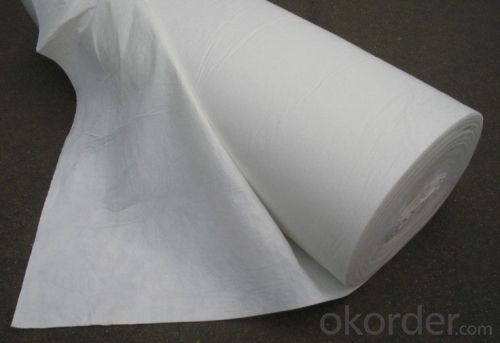Prime Geotextile Continuous Filament Spunbonded Nonwoven Style
- Loading Port:
- Qingdao
- Payment Terms:
- TT or LC
- Min Order Qty:
- 2000 m²
- Supply Capability:
- 800000 m²/month
OKorder Service Pledge
OKorder Financial Service
You Might Also Like
Continuous Filament Spunbonded Nonwoven Geotextile
Introdcution of Continuous Filament Spunbonded Nonwoven Geotextile:
Made from virgin PET (polyester) chips, the continuous filament was extruded from PET chip by machine directly by spunbond process, and then punch together to get the stable 3D with higher strength fabric. So it has high strength, good creep property excellent and erosion resistance, aging-resistance and heat resistance.
Specifications of Continuous Filament Spunbonded Nonwoven Geotextile:
•100g/m2—800g/ m2
•4m—7m in roll width
the length as clients’ request
Production Standard:
GB/T17638-1998
Jt/t 520-2004
Advantage of Continuous Filament Spunbonded Nonwoven Geotextile:
Good creep property and hydraulics property, resistance to corrosion, excellent anti-aging and heat-resistance quality.
Applications of Continuous Filament Spunbonded Nonwoven Geotextile:
• Filtration of soils in drainage applications by retaining soil particles while allowing for the free flow of water.
•Separation and stabilization in road and railway construction
•Prevention of soil movement in erosion control measures
•Cushioning and protection in many containment projects
FAQ:
1. Which payment do you accept?
For you convinience,our payment can be L/C,TT
2. Is free sample available?
We can supply free samples. You'll just need to pay for express cost.
3. How about your quality?
We have strict quality control system, we make testing on incoming raw material and finished products. Your third party testing is also welcomed. With high quality, our products are used on government projects at home and abroad. Our product quality is accepted by clients from all over the world.
Photos of Products and Factory:





- Q: Are geotextiles resistant to punctures and tears?
- Yes, geotextiles are designed to be resistant to punctures and tears. They are made from durable materials that can withstand external forces and provide a high level of protection against damage.
- Q: Above a geotextile one, that there is any acceptance of norms?
- Detailed advice vx, zhang my side is the manufacturers, welcome advice, Insider!
- Q: After the laying of drainage board and then need to lay a layer of geotextile it?
- Yes, from the role of filtration, over the water, but to prevent clogging, I professional production
- Q: Where is the geotextile in the municipal works?
- Conservation, consideration, there is more green and more Chinese geotextile material manufacturers
- Q: What are the different geotextile filter criteria?
- Some of the different geotextile filter criteria include permeability, pore size distribution, puncture resistance, durability, and chemical resistance. These criteria help determine the effectiveness of a geotextile in filtering water and preventing soil erosion.
- Q: What are the different geotextile reinforcement techniques?
- Some of the different geotextile reinforcement techniques include mechanical stabilization, soil confinement, and erosion control. Mechanical stabilization involves using geotextiles to increase the strength and load-bearing capacity of soils, such as in road construction or retaining walls. Soil confinement refers to the use of geotextiles to prevent soil erosion and maintain the stability of slopes or embankments. Erosion control techniques involve using geotextiles to protect soil surfaces from the erosive forces of water or wind, helping to maintain the integrity of the landscape.
- Q: Geogrid Specifications TGSG40-40 What does it mean?
- I tell you, TGSG40-40: two-way stretch plastic geogrid, its vertical, horizontal strength indicators are not less than 40KN, to meet the national standards. We are a professional geogrid manufacturer, you have any questions you can call: 13879 22308, also welcome you to visit the company. Thank you!
- Q: What are the key factors affecting the UV stability of geotextiles?
- The key factors affecting the UV stability of geotextiles include the type of polymer used in their manufacture, the concentration and type of UV stabilizers incorporated into the material, the thickness and density of the geotextile, and the duration and intensity of exposure to UV radiation.
- Q: Geotextile moisture-proof layer: 200 cloth +400 film +200 cloth
- Two cloth a film manufacturers direct production qualification need to contact
- Q: Permeable geotextile price how much
- See specifications, specifications are not the same indicators, the price is not the same, Huazhi geotextile material manufacturers
Send your message to us
Prime Geotextile Continuous Filament Spunbonded Nonwoven Style
- Loading Port:
- Qingdao
- Payment Terms:
- TT or LC
- Min Order Qty:
- 2000 m²
- Supply Capability:
- 800000 m²/month
OKorder Service Pledge
OKorder Financial Service
Similar products
Hot products
Hot Searches
Related keywords


































